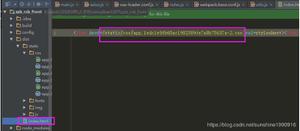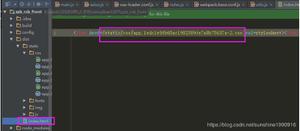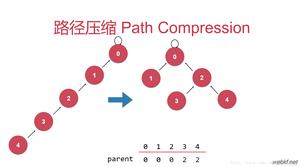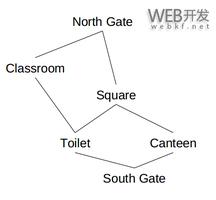java相对路径、绝对路径及类路径

import java.io.File;import java.net.URL;
/**
*/
public class Test {
/**
* 测试相对路径是相对谁
* -- 相对于部署项目的文件夹(AppServer)
*/
// @org.junit.Test
public void testRelativePath() throws Exception {
String filePath = "test//t.txt";
File file = new File(filePath);
if (!file.exists()) {
if (!file.getParentFile().exists()) {
file.getParentFile().mkdirs();
}
file.createNewFile();
}
System.out.println(file.getAbsolutePath());
// E:\workspace\AppServer\test\t.txt
}
/**
* 测试绝对路径
*/
// @org.junit.Test
public void testAbsolutePath() throws Exception {
String filePath = "D:\\path\\test.txt";
File file = new File(filePath);
if (!file.exists()) {
if (!file.getParentFile().exists()) {
file.getParentFile().mkdirs();
}
file.createNewFile();
}
System.out.println(file.getName()); // test.txt
System.out.println(file.getAbsolutePath()); // D:\path\test.txt
}
/**
* 获取ClassPath(类路径)
*/
// @org.junit.Test
public void testClassPath() throws Exception {
/*
来个对比(各种情况下ClassPath的值):
1) 直接junit运行方法时打印:(给这个类单独创建了一个ClassPath)
/E:/workspace/AppServer/target/test-classes/
2) Eclipse启动tomcat时打印(tomcat插件中的ClassPath):
/E:/workspace/.metadata/.plugins/org.eclipse.wst.server.core/tmp0/wtpwebapps/AppServer/WEB-INF/classes/
3) 单独启动tomcat时打印(tomcat中的类路径):
/E:/apache-tomcat-7.0.62/webapps/AppServer/WEB-INF/classes
*/
// 获取类路径
URL url = this.getClass().getResource("/");
// file:/E:/workspace/AppServer/target/test-classes/
String path = url.getPath();
// 看看类路径下都有啥
File file = new File(path);
// 直接junit运行方法
for (File f : file.listFiles()) {
System.out.println(f.getName()); // 还没有文件被编译,啥也没有
}
}
/**
* 测试路径中的正反斜杠
*/
// @org.junit.Test
public void testSprit() throws Exception {
// 文件已经存在
String filePath = null;
/*
* 正斜杠\'/\'
*/
filePath = "D:/path/test.txt"; // D:\path\test.txt
filePath = "D://path//test.txt"; // D:\path\test.txt
filePath = "D:/path//test.txt"; // D:\path\test.txt
filePath = "D:////path////test.txt"; // D:\path\test.txt
/*
* 反斜杠\'\\'
*/
filePath = "D:\\path\\test.txt"; // D:\path\test.txt
// filePath = "D:\path\test.txt"; // 编译都通过不了啊,\t是一个制表符
// filePath = "D:\\\path\\test.txt"; // 编译都通过不了啊
// 正反斜杠混合使用
filePath = "D:\\path/test.txt"; // D:\path\test.txt
filePath = "D:/path\\test.txt"; // D:\path\test.txt
File file = new File(filePath);
System.out.println(file.getAbsolutePath());
}
@org.junit.Test
public void testName() throws Exception {
String filePath = null;
filePath = "D:/path/test.txt"; // D:/path/test.txt
System.out.println(filePath);
filePath = "D://path//test.txt"; // D://path//test.txt
System.out.println(filePath);
filePath = "D:/path//test.txt"; // D:/path//test.txt
System.out.println(filePath);
filePath = "D:////path////test.txt"; // D:////path////test.txt
System.out.println(filePath);
/*
* 反斜杠\'\\'
*/
filePath = "D:\\path\\test.txt"; // D:\path\test.txt
System.out.println(filePath);
// 正反斜杠混合使用
filePath = "D:\\path/test.txt"; // D:\path/test.txt
System.out.println(filePath);
filePath = "D:/path\\test.txt"; // D:/path\test.txt
System.out.println(filePath);
}
/**
* 总结:
* 1) 相对路径
*
* 相对路径:是相对于application(服务)目录所在的路径。
*
* 比如:
* 相对路径为"test/t.txt", 服务目录为:"D:/App"
* 则t.txt的绝对路径为:"D:/App/test/t.txt"
*
* 2) 绝对路径
*
* 没什么好说的。
*
* 3) 类路径
*
* a. Eclipse中右键运行(为当前类单独创建了一个类路径):
* /E:/workspace/AppServer/target/test-classes/
*
* b. Eclipse中启动tomcat(tomcat插件中的类路径)::
* /E:/workspace/.metadata/.plugins/org.eclipse.wst.server.core/tmp0/wtpwebapps/AppServer/WEB-INF/classes/
*
* c. tomcat中启动start.bat(tomcat服务中的类路径):
* /E:/apache-tomcat-7.0.62/webapps/AppServer/WEB-INF/classes
*
* 4) 路径中的正反斜杠(/ \)
*
* a. \'/\' 正斜杠
* 怎么用都是对的,无论是单斜杠,双斜杠,多斜杠 或 混合使用,都能正确的解析文件路径。
*
* b. \'\\' 反斜杠
* 只能使用双斜杠\'\\\'.
* 单斜杠,多斜杠 或 混合使用都会报错。编译都不能通过。
*
* c. 正反斜杠混合使用
* 反斜杠只能使用双斜杠\'\\\', 正斜杠随意。 都能正确解析出路径。 "D:/aaa\\/bb.txt",这种写法也能解析。
*
* d. 反双斜杠\'\\\',运行时打印字符串时会变成\'\\'。
* 正斜杠,运行时打印字符串,打印结果和编译前一致。
*/
}
以上是 java相对路径、绝对路径及类路径 的全部内容, 来源链接: utcz.com/z/393062.html









